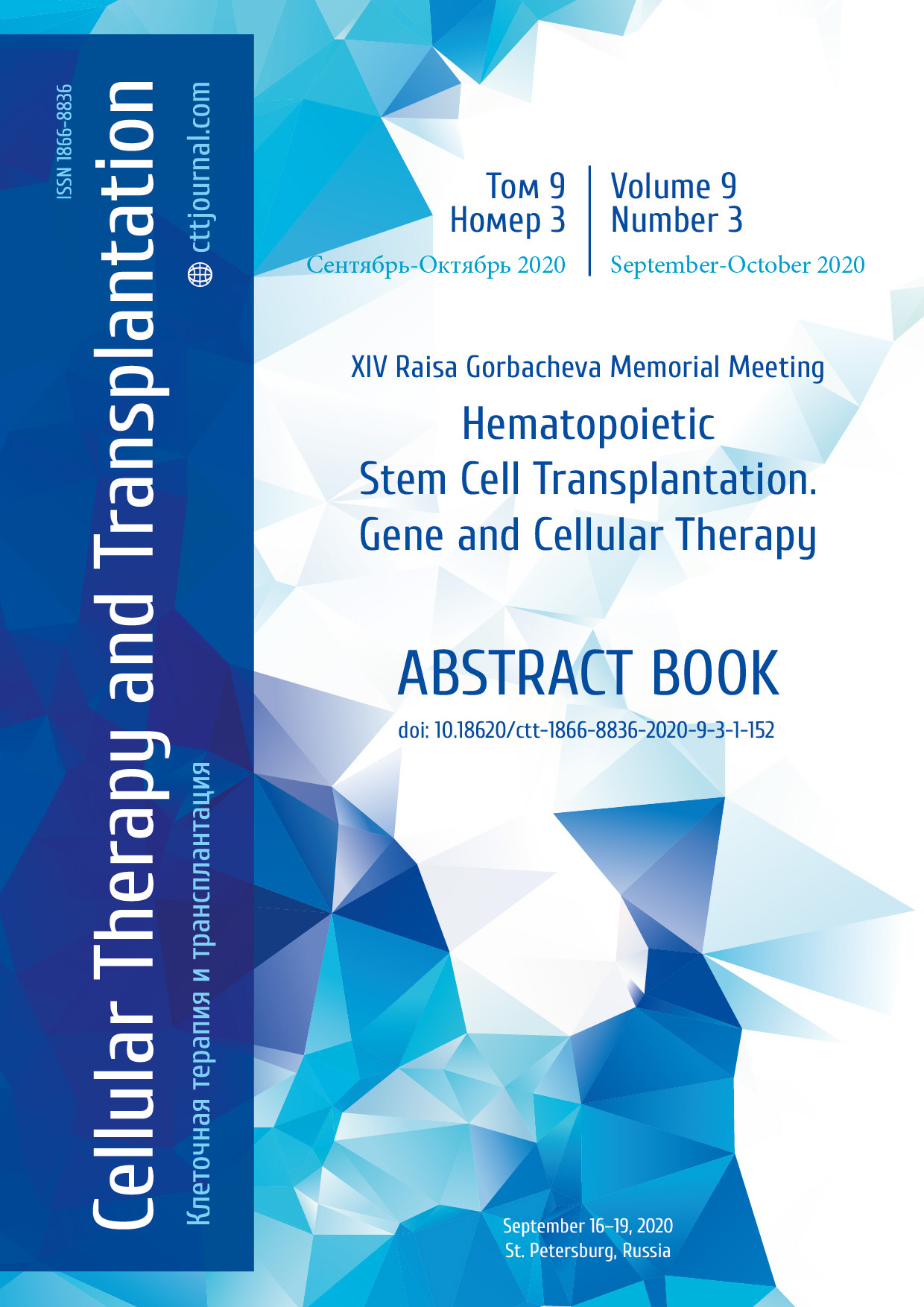PI-04. Therapy and prophylaxis of cytomegalovirus infection in post-transplant patients using specific T lymphocytes
Alexandra A. Maleeva, Yana V. Serdyuk, Anna A. Dmitrova, Mikhail Yu. Drokov, Denis V. Kamelskikh, Larisa A. Kuzmina, Tatiana V. Gaponova, Grigory A. Efimov, Elena N. Parovichnikova, Valery G. Savchenko
National Research Center for Hematology, Moscow, Russia
Contact: Dr. Grigory A. Efimov, e-mail: gefimov@gmail.com
Summary
Introduction
Cytomegalovirus infection (CMVI) in the early period after transplantation of allogeneic hematopoietic stem cells (allo-HSCT) remains a significant cause of transplant failure and mortality. Partially HLA-mismatched patients, as well as those who received a transplant from a haploidentical donor, are at high risk of developing CMVI. At the same time, the blood of healthy of chronic CMV carriers contains virus-specific T-lymphocytes, which effectively control the replication of the virus. In some healthy donors, the number of these cells reaches several percent, which makes them attractive sources of T-lymphocytes for adoptive therapy. Our studies have shown that the presence of one of the HLA class I alleles in the donor capable of presenting the known immunodominant epitopes from the CMV pp65 protein (HLA-A*02:01 and HLA-B*07:02) leads to focusing of immune response of cytotoxic lymphocytes on pp65 epitopes (one, for HLA-A*02:01) or two (for HLA-B*07:02). Accordingly, when choosing a donor for adoptive therapy, it is necessary to avoid mismatch between donor and patient for these alleles.
Materials and methods
In this clinical study of approaches to CMVI therapy and prevention using specific lymphocytes in the National Research Center for Hematology, we isolated allogeneic T-lymphocytes for six patients who underwent allo-HSCT. The selection criterion for donors was a high level of T-cell response to CMV (> 100 cells per 105 leucocytes), determined by the ELISpot technique). The lymphocyte infusion was performed on day 30 after allo-HSCT in four patients as prophylaxis, and in two cases, for CMVI therapy. Related blood stem cell donors served as blood source in four patients, and for two patients – a third party donor was used.
Results
A significant difference was observed both in number of the cells yielded (105 to 107 mononuclear cells), and their subpopulation composition. The number of antigen-specific cytotoxic lymphocytes in the cell product depended on the presence of HLA alleles capable of presenting the previously described immunodominant epitopes in the donor.
All the patients tolerated the injection of cells satisfactorily; not a single case of GVHD was recorded, which suggests a high safety of the method. To assess effectiveness, it is necessary to expand the sample of patients, but at the time of the presentation of the poster, none of their prophylactic patients developed CMVI, and viral titers were undetectable in both patients with previous viremia.
Conclusion
In the case of using T-lymphocytes from a third-party donor, tracing of individual clones may serve as an indirect confirmation of the effectiveness of the method. For this, samples of lymphocytes were obtained from donor leukopheresis, a cell product and from patients at various times before and after the introduction of CMV-specific lymphocytes. High-throughput sequencing of T-lymphocyte receptor repertoires will allow tracing the fate of individual clones after adoptive T-cell therapy.
Keywords
Cytomegalovirus, allogeneic hematopoietic stem cell transplantation, cell therapy.


